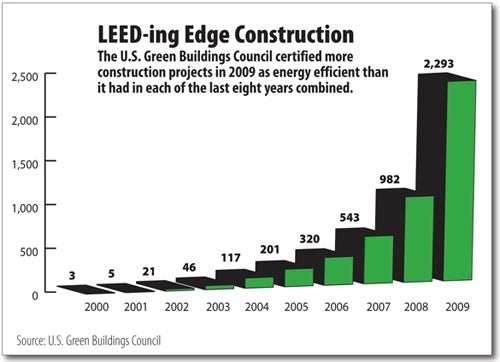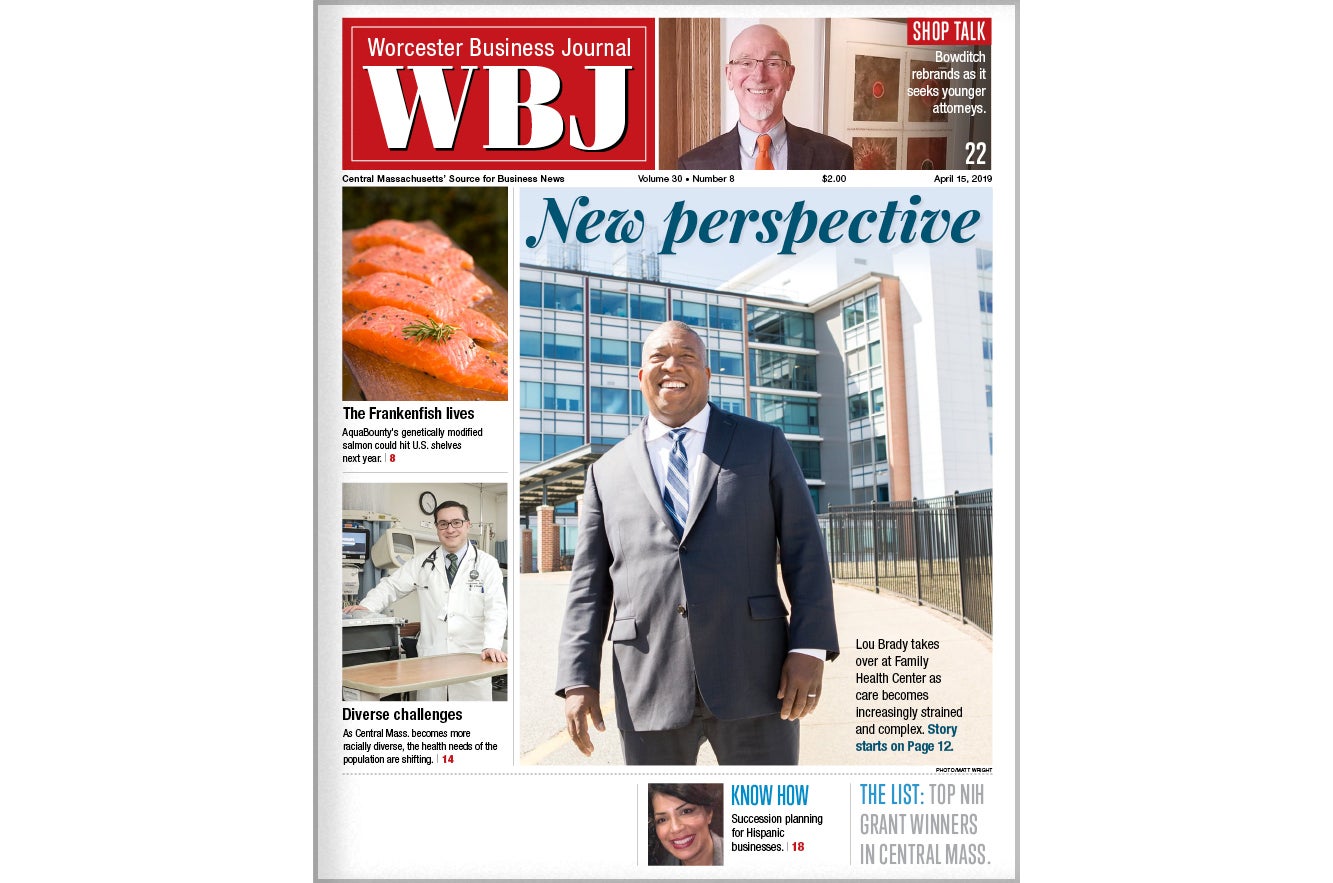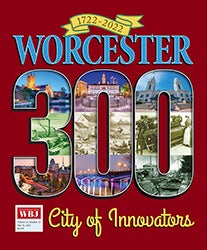Green Gathers Momentum Despite Recession | Construction firms say interest is still high in LEED certification

Americans did not spend as much on construction in 2009 compared to previous years. In fact, spending hit a six-year low of $900 billion last year, according to the Associated General Contractors of America.
But when owners did spend money on construction, they took energy efficiency into account.
The U.S. Green Building Council, or USGBC, certifies buildings through a system known as LEED (Leadership in Energy and Environmental Design). In 2009, 2,293 buildings around the United States were LEED certified. That is a four-fold increase from two years earlier.
More projects were LEED-certified in 2009 than in all the previous years combined, since 2000.
Local industry officials said the push to go green in construction is a combination of clients and owners desiring to embrace energy efficiency, state and federal efforts to mandate efficiency, and utility companies offering incentives to do so.
Draft Regulations
“There are a lot of opportunities around the commonwealth for buildings that could be sealed tighter,” said Frank Gorke, director of the energy efficiency in the state’s Division of Energy Resources. “Efficiency can reduce people’s heating and electricity bills, reduce carbon emissions, and reduce our fossil fuel dependency as a nation.”
People generally see efficiency as the right thing to do, Gorke said.
But increasingly, owners and developers are also being forced to consider efficiency through construction and building code mandates.
Massachusetts’s building codes are modeled after national standards set forth by the International Energy Conservation Codes, which are updated every three years. Tom Riley, the state’s code development manager, said in the past two years codes have become more stringent in mandating base-level standards for the amount of insulation needed in a building and the tightness of windows and doors to keep air out, for example.
Some communities can take the mandates even further with stretch codes, which are even more strict standards for using efficient appliances, using sustainable and recycled products, etc.
A handful of communities have adopted these even more stringent rules and Riley said within a few years those could be the standard.
Despite all the new rules, contractors in Central Mass. don’t generally see the building codes as onerous.
Todd McCabe, a LEED project executive with Consigli Construction Inc., said most of the company’s projects are designed above state building codes for efficiency.
That’s because many of the workers at the company have been LEED certified by the USGBC. Consigli already has about 60 percent of workers LEED certified, and has a goal to reach 80 percent this year.
Having employees who are knowledgeable about the ways to make construction and design efficient help make the process easier to adopt for the client, McCabe said.
Some clients may still be leery, however.
The extra cost of getting LEED certified, which can be as much as 3 to 6 percent, can be a turnoff to some clients. Efficient materials can be more expensive, plus there is paperwork that has to be filed with USGBC to prove efficient designs and techniques were used.
Scott Richardson, a principal at Gorman Richardson Lewis Architects in Hopkinton, said clients are absolutely interested in energy efficiency design and construction.
But, he too has noticed that the higher upfront cost of going green can be a turnoff for some customers. Many customers are still looking to incorporate energy efficient practices, but they may not look to spend the extra cost to get the building officially LEED certified.
While there may be an all-time high in LEED-certified projects, there could be even more buildings that have most of the qualities of LEED certification but do not have the designation.
LEED certification takes a variety of factors into account in approving the building as being green including the location of a project and not using previously undeveloped land, to energy-use monitoring equipment and a commitment to using sustainable materials.
Gorke said the cost of efficiency is subsidized by programs the state and utility companies offer to reduce the price tag.
For example, utility companies offer incentive programs to customers interested in efficiency.
Francis Boucher is a senior energy engineer with National Grid and said the utility has some programs that pay up to 50 percent of the cost of designing a LEED-certified project. The utility can pay up to 75 percent of the additional costs of materials it takes to get the project to a energy efficient standards.
So, for example, if it would cost an extra 5 percent to make a project green, National Grid will pick up three-quarters of the difference.
Boucher said the company has not seen as many construction projects this year taking advantage of the program. There was only a handful compared to a couple dozen in years past. He credits that to the overall slowdown in the construction market, however.









0 Comments